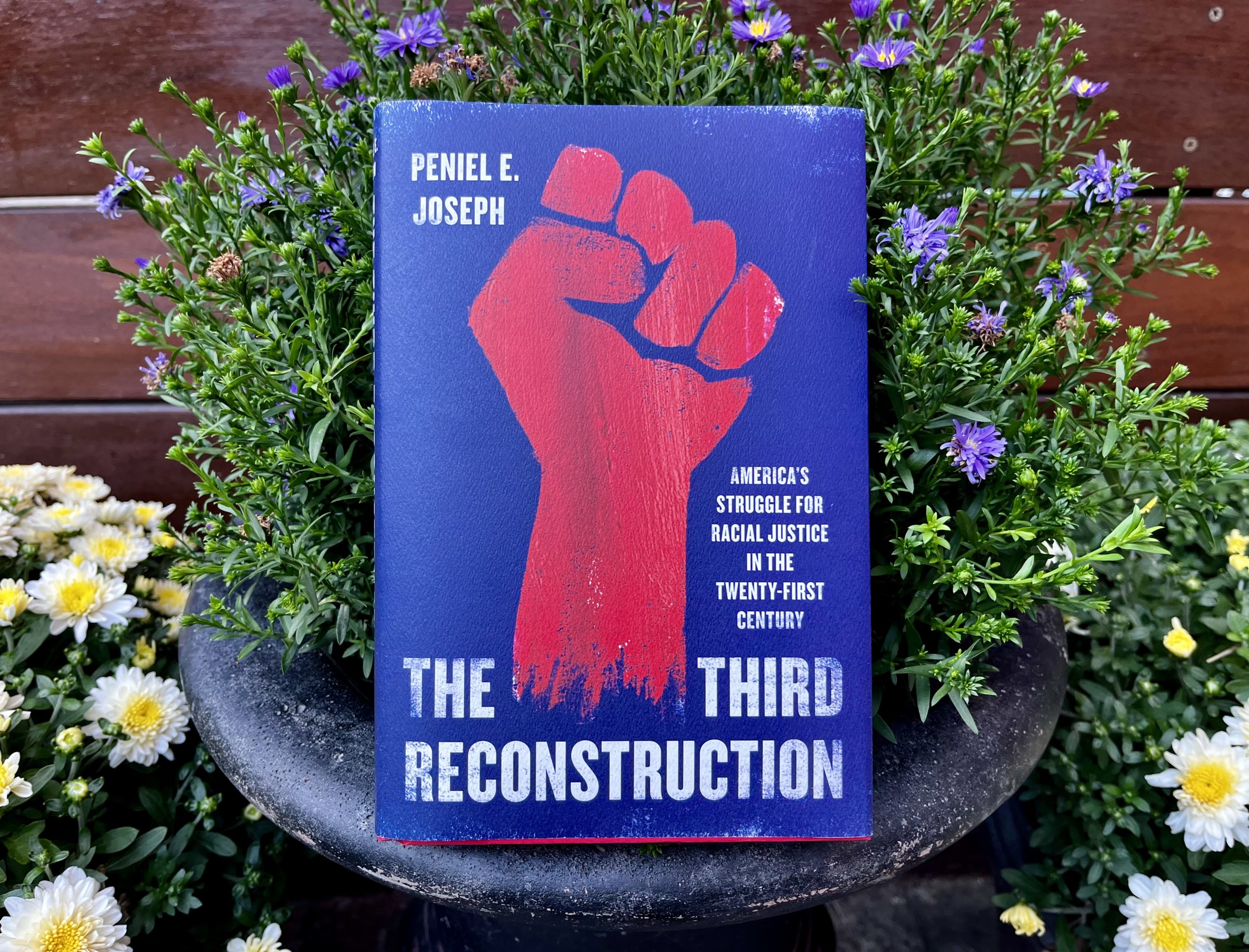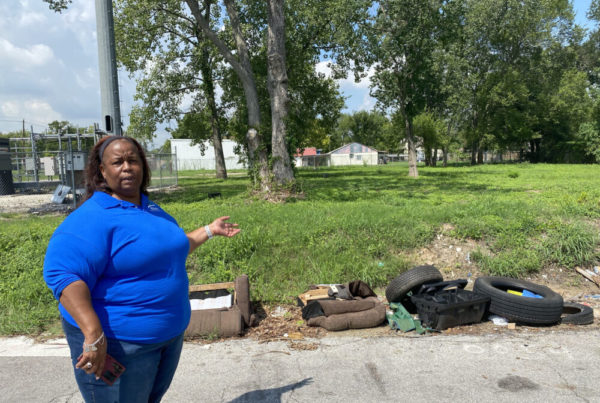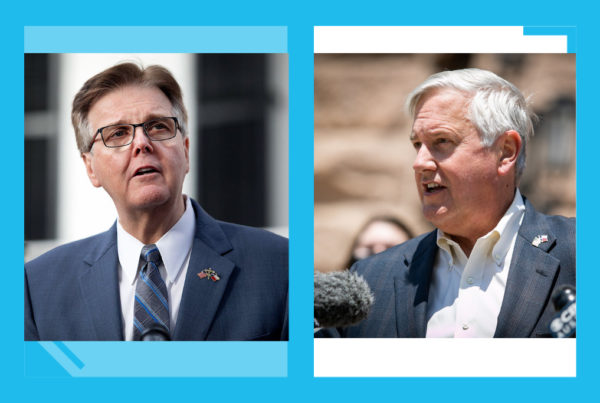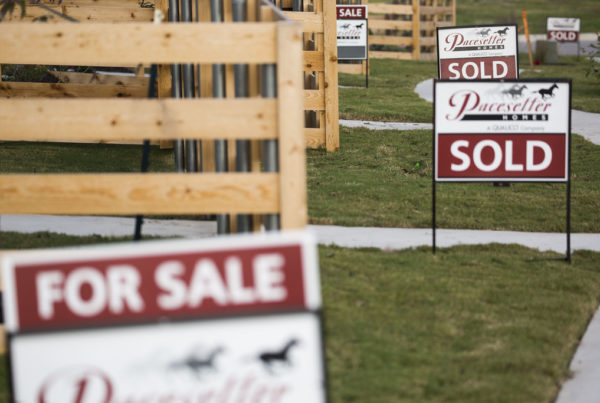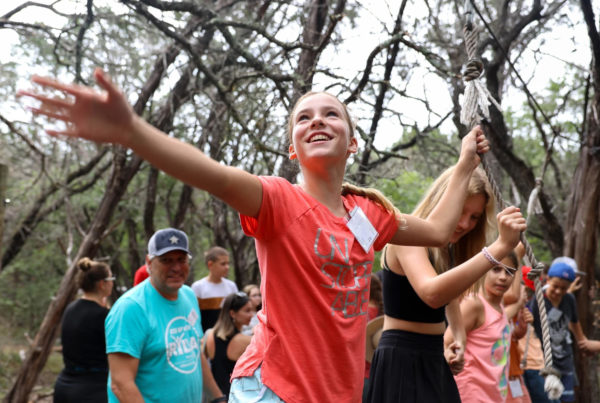The United States is just emerging from its third period of reconstruction. So writes historian Peniel Joseph.
The founding director of the Center for the Study of Race and Democracy at UT-Austin’s LBJ School identifies this period as between the election of the country’s first Black president and the insurrection at the U.S. Capitol building on January 6, 2021.
Historians identify the first period of American reconstruction as immediately after the Civil War. The end of slavery meant new opportunities for Black people but those were immediately quashed with the rise of the Ku Klux Klan and Jim Crow laws.
The second period of reconstruction began with the U.S. Supreme Court ruling abolishing school segregation and ending with the assassination of Dr. Martin Luther King, Jr. – another period of gains for people of color and then backlash.
Joseph spoke to the Texas Standard about his new book: “The Third Reconstruction: America’s Struggle for Racial Justice in the Twenty-First Century.” He says it’s important to look at the very recent past in the context of greater American history because it offers hard lessons as well as hope. Listen to the interview in the audio player above or read the transcript below.
This transcript has been edited lightly for clarity.
Texas Standard: Are there risks in identifying an historic era so shortly after it happened?
Peniel Joseph: Well, you know, I think there are always risks, especially when you’re doing contemporary history. But I think that the similarities are just so striking when we think about some of the unhappy patterns that we see through all three periods of reconstruction. And certainly what we all witnessed in 2020 really allows us to get a deeper understanding of the contemporary by checking to see patterns in previous historical time periods. So I don’t think history repeats itself, but it certainly rhymes. And when we think about this period of reconstruction, there are real similarities with the earlier two periods.
The first two words in your book are “George Floyd” – but it wasn’t his murder at the hands of police that marked the beginning or end of this Third Reconstruction for you. How does that moment and its aftermath fit in?
Certainly, 2020 is a year filled with these startling juxtapositions. So on the one hand, the year begins with this health pandemic, and we all see that there are racially disparate effects of the pandemic. Then we see the murder of George Floyd, and 25 million people come out in the streets in the largest racial justice and social justice demonstrations and movement in American history. Black Lives Matter becomes a global phenomenon. And then we see a very, very racially divisive presidential election. But we get the largest voter outcome in American history. Over 155 million people vote. And then we see a contested election to the extent that a sitting American president says he did not lose and he’s sort of refusing to concede defeat. And, of course, January 6 and the insurrection at the nation’s capitol. So we think about those periods, both the progress that we see — people finally having a racial and political reckoning and the negative — that really encapsulates these periods of reconstruction where, it’s really less of one step forward and two steps back but more of this battle between reconstructionist supporters of multiracial democracy and redemptionist advocates of white supremacy. And it’s both a political battle. It’s a policy battle. It’s a legislative and legal war, but it’s also a physical battle.
During all three periods we see vigilante violence against Black people and at times against white people who are supporters of racial justice. During all three periods, we see acts of racial terror and intimidation and, really, during all three periods when Black people are allowed to vote, we see allegations of voter fraud and calls for election reform and election integrity. So it’s really startling how similar the periods are, both in terms of the negatives, but also the positives. During all three periods, we see a bunch of racial firsts, I will call them, the first Black elected officials at the local, state and national level happened in the decades following the Civil War. The first erection of historically Black colleges and universities happened during this period. You get the first notion of really Black wealth and Black entrepreneurship during this period. So those similarities continue in our time in ways that probably are even more stunning than previously, because that period could not have imagined a Black president or a Black woman sitting on the Supreme Court.
Throughout your book, you seem to make a very intentional effort to highlight the contributions of Black women and queer Black people. Why is that so important to you?
I wanted us to have a throughline to why was the Black Lives Matter movement so different? Because for a long time there was sort of a debate: What do we mean by Black Lives Matter? Don’t all lives matter? And then finally people said, well, we’re saying Black Lives Matter, too, also, it’s not to denigrate anybody else. But then within that phrase, Black Lives Matter. There are people who would say All Black Lives Matter. And what they meant by that was in previous reconstruction periods, Black people themselves have marginalized parts of the community, people who were queer, people who were trans, people who were women. And what I wanted to show is that that group has actually always called for an expansive democracy, not because they’re better or more special than people. It’s because they’ve been the most marginalized, even within groups. So when we think about these Black women, I wanted us to think about how they have been some of the foremost democratic theorists and advocates of what W.E.B. Du Bois called abolition democracy. And that term abolition democracy was this notion of the abolition of both racial slavery, but instruments and structures of punishment that had been weaponized to deny Black people dignity and citizenship.
Some of us who are queer, some of us who are women actually grow up in contexts where somebody has told us, including family members, that our human dignity doesn’t count. That’s why I always say dignity is the prerequisite to citizenship, because first and foremost, you have to believe that you matter. That’s the first and foremost. So what was so exciting to me about Black Lives Matter when they meet with President Obama in December of 2014, is that Obama embodies this citizenship as the American dream from the top down: Harvard, Occidental, Columbia, the first Black head of the Harvard Law Review, unimpeachable credentials. But BLM embodies this idea of dignity from below. And as we saw the Obama presidency unfold, even with those unimpeachable credentials, it’s only in our country that he could both be elected as president, which shows you sort of the grandeur of the United States of America. But it’s also only in our country that you could have a birther movement that says he’s not a citizen and the person who leads that movement becomes the next president. And those are the travails or the tragedy of American history. So those two, things can exist at once. When Obama tells the United States in 2004 at the Democratic National Convention — it’s only in this country is my story possible — he’s right. He just doesn’t focus on the underside of that story. And I think it’s critical if we’re ever going to have national unity and build a new consensus, is that we have to focus on both the fact that his story could only happen in the United States, but also the challenge to his citizenship and his dignity could only happen here as well.
You also write Black Lives Matters has been especially powerful in some ways because it’s not associated with one person.
Absolutely. Black Lives Matter has been effective, I argue, because it moved away from sort of the cult of personality that’s really usually inevitable in American politics. Just think of our iconography of John F. Kennedy or Lyndon Johnson or Ronald Reagan. Those folks are towering figures. But when you look at a movement like Black Lives Matter, it’s more similar to SNCC, the Student Nonviolent Coordinating Committee, where they tried to really organize folks at the grassroots and they were really interested, first and foremost, I argue, in dignity as a prerequisite of citizenship. And I make that point, because we all have human dignity, but we all have to believe in our own human dignity.
You add a bit of yourself in the book. Could say a little bit more about how diving deep into this history was important for you and what you hope this book will do for others?
I’m the proud son of Haitian immigrants, and I really focus on my mother, Germaine Joseph, who really taught me everything that I know. I grew up in New York City in the 1980s. My mom was part of SEIU 1199. She worked as a hospital worker at Mount Sinai. So I was on picket lines in elementary schools. I got to see how multiracial democracy looks and multiracial solidarity looks through my mother.
And she told me about the history of Black women in Haiti and Black feminism. So the deeper I sort of tried to plumb those depths, the more really inspired and hopeful I got. And so what I hope people get from the book is that I think in the context of 2020, a lot of folks were talking about trying to understand why we were at this critical inflection point in American history. And I thought that the period of reconstruction is really the American origin story. It’s where we try to begin again. And so I thought these three periods of reconstruction offer us ballast to do so — through the good, the bad and the ugly. The greatest thing about the United States is the ability to innovate and to transform. The not so great is when we tried to elide and ignore. And so what I hope people get out of this is that we have greater strength in the truth than sometimes we imagine. So this is a story that’s not just a heartbreaking story. It’s also a hopeful story. And my own story as an American is part of this. And I think you can be critical of America and love America at the same time. And I hope this book shows that.


